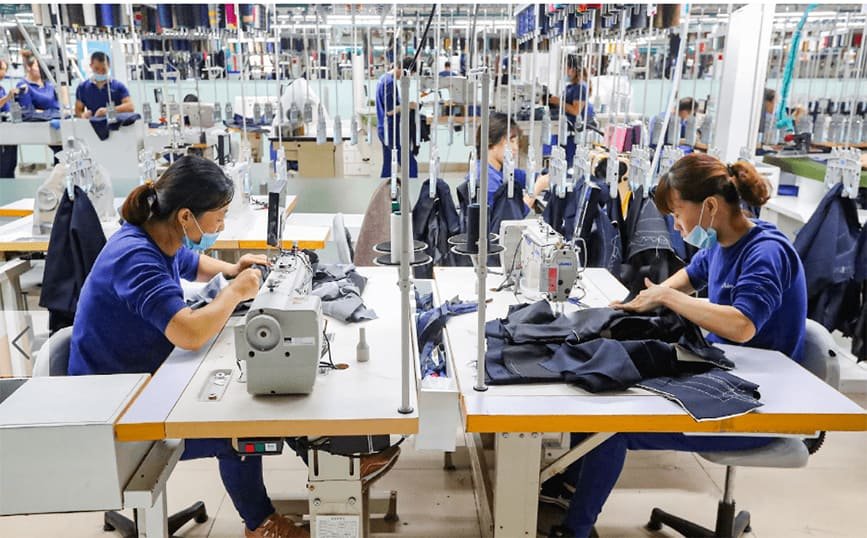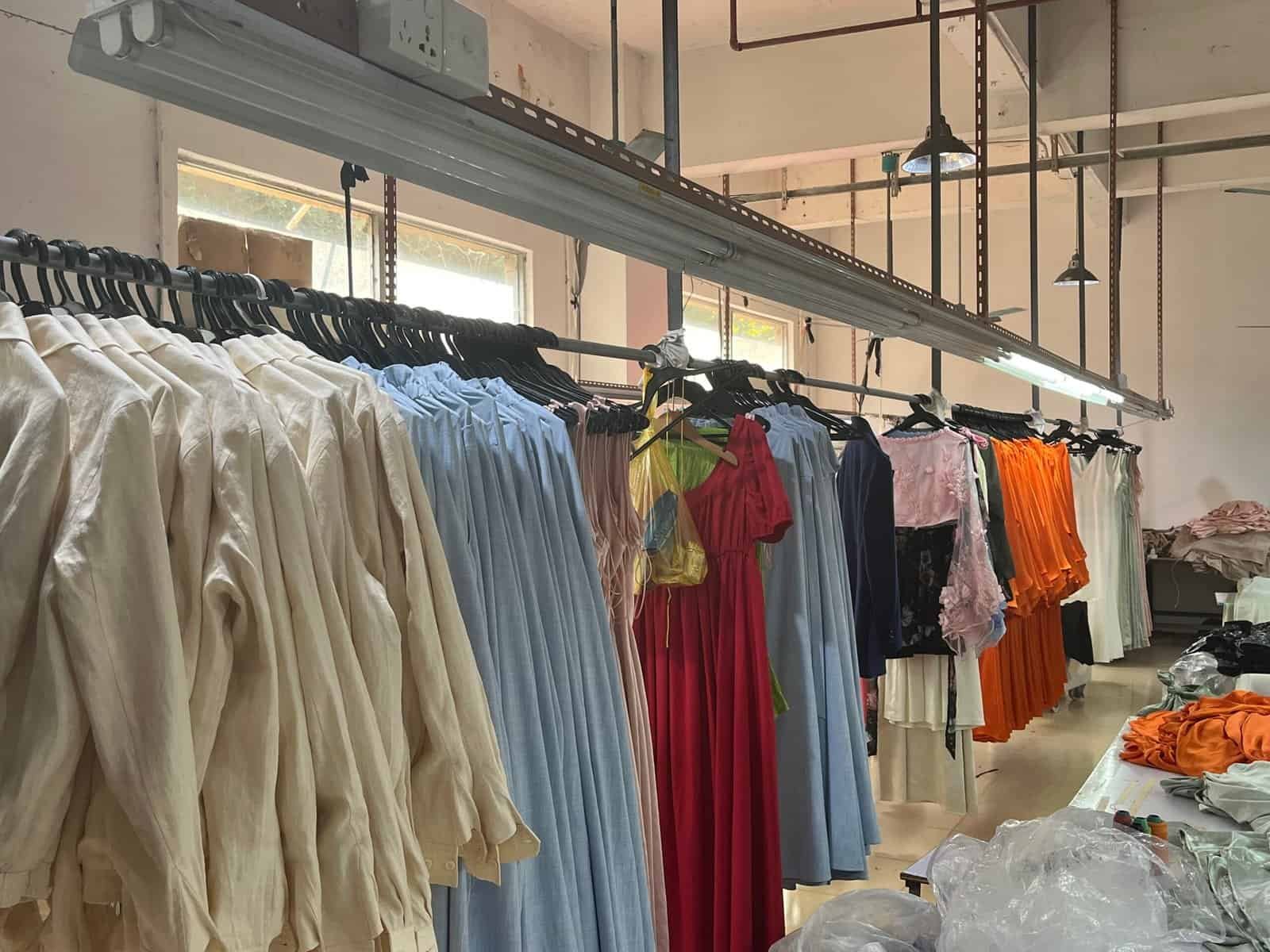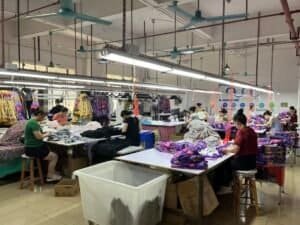As we all know, building long-term partnerships with apparel manufacturers is of great importance in the clothing industry. It can guarantee the quality of clothes produced and improve efficiency. The benefits of building long-term partnerships with apparel manufacturers are obvious. For brands, they can improve productivity and reduce costs if they build long-term partnerships with manufacturers. For manufacturers, long-term partnerships with brands can constantly bring new production orders. Therefore, it is a win-win strategy for both brands and manufacturers.
We are all aware that manufacturer matters in the apparel industry, but how can we build long-term partnerships with apparel manufacturers? This article introduces several steps you should follow if you want to build and maintain long-term partnerships with manufacturers, such as identifying suitable manufacturers, establishing clear communication channels, aligning values and expectations, etc. We hope to help you build a long-term partnership with your manufacturer after you read this article.

Identifying Suitable Manufacturers
The first thing we should do if we want to maintain long-term partnerships with apparel manufacturers is identifying suitable manufacturers. We can do so from the following three aspects.
Researching and shortlisting manufacturers based on brand needs and values
Before choosing your manufacturer, you have to do some researches on different manufacturers. You can attend various trade shows in the apparel industry, which is a great way to know and get in touch with manufacturers. At trade shows, we are able to learn about the background of the manufacturers and how we work with them. We can research and shortlist manufacturers based on brand needs and values.
Evaluating manufacturer expertise, experience, and reputation
You should always remember to evaluate your manufacturer from different aspects. We need to evaluate the manufacturer’s size, production capacity, production experience and reputation. The prominence of only one or several aspects cannot represent the real strength of the manufacturer. Only an all-round evaluation can assess the strength of the manufacturer more accurately, which can help us choose the right manufacturer.
Initial communication and inquiries to gauge compatibility
The next thing you should do is to have a conversation with your manufacturer and make assessments accordingly. You need to schedule a meeting with the manufacturer in which you can ask them questions about what you want to know. Doing so will deepen your understanding of the manufacturer and determine if the manufacturer fits the positioning of your brand. Only by learning different things about the manufacturer can you pick the most suitable one.
Establishing Clear Communication Channels
In order to maintain a long-term partnership with your manufacturers, you need to establish clear communication channels. This part introduces the importance of clear communication and ways to establish clear communication channels.
Importance of clear communication for successful partnerships
Clear communication reduces misunderstandings in the transfer of information. Brands need to express their requirements clearly and unambiguously to manufacturers to avoid possible misunderstandings in the communication process. This will lead to a stronger partnership and will improve team cohesion, which will help to overcome challenges faced together.
Setting up regular communication schedules
Both brands and manufacturers have their work schedules. In order to communicate effectively, the timing of communication must be determined in advance. Therefore, it is important to set up regular communication schedules that do not interfere with the original work plans of both sides, but also allow the brand and manufacturer to discuss the problems encountered in time.
Utilizing effective communication tools and platforms
In order to establish clear communication channels, we need to use effective tools and platforms for communication. There is several software we can use for online meetings, such as Zoom, Webex and Microsoft Teams. We can also use FaceTime or WhatsApp for communication. These tools and platforms allow us to communicate regardless of where we are, thus making it easier for us to establish clear communication channels.
Aligning Values and Expectations
In order to maintain a long-term partnership, brand and manufacturer should have similar values and expectations. Here are a few tips for you to align values and expectations.
Discussing and agreeing on quality standards, timelines, and pricing
There are many things you should discuss with your manufacturers in order to align values and expectations, such as quality standards, timelines, and pricing. This prevents the manufacturer from producing garments that do not meet the brand’s requirements and ensures that the brand gets the garments on time for sale. Additionally, discussing the pricing of the apparel allows both parties to maximize their profits and maintain a long-term partnership.
Sharing brand values, sustainability goals, and ethical practices
The next thing you need to do is to share your brand values, sustainability goals and ethical practices with your manufacturers. A business alliance should be formed between the manufacturer and the brand to face the customer together. By sharing the brand values with the manufacturer, the manufacturer is better able to convey the values in the garments it produces. By sharing the ethical practices of the production process with the brands, they can determine if the manufacturer can meet their sustainability goals or not.
Setting realistic expectations and understanding limitations
When aligning values and expectations, remember not to set your goals too high. You must understand you have limitations and your expectations should be realistic. Your goals must be achievable. Otherwise, when you don’t meet your expectations, both the brand and the manufacturer will lose their work ethic, and ultimately lose confidence, which is not good for maintaining a long-term partnership.
Formalizing the Partnership
Now we have come to the part to build a partnership with your apparel manufacturer. Here are some ways to formalize the partnership.
Drafting and reviewing contracts that outline terms of partnership
In order to make the partnership formal, you need to draft and review contracts that outline terms of partnership. The purpose of making a contract is to protect the legal rights and interests of the brand and the manufacturer. Manufacturers and brands need to draw up the relevant terms and conditions. Under the constraints of the contract, both parties will need to undertake their obligations. This will provide a guarantee for a long-term partnership.
Discussing and agreeing on conflict resolution procedures
There will always a time when you and your manufacturers have conflicts. So, you have to discuss and agree on conflict resolution procedures. Brands and manufacturers need to face conflict head on and be persistent in finding solutions. You can’t really have an authentic, healthy partnership if you can’t find the best way to discuss and agree on conflict resolution procedures.
Establishing a trial period to evaluate the partnership
Before formalizing the partnership, you need to have a trial period to evaluate the partnership. Brands and manufacturers can examine each other’s capabilities during the trial period. The trial period is a buffer period for the brand and the manufacturer. Brands and manufacturers can learn more about each other during the trial period and then decide whether they can form a long-term partnership or not.
Fostering Mutual Growth and Learning
Building a long-term partnership with your manufacturer requires you to learn from each other. But how to foster mutual growth and learning? Here are some of my suggestions.
Sharing feedback and insights for continuous improvement
The first thing you should do is share feedback and insights with your manufacturer for continuous improvement. Both brands and manufacturers need to have a strong belief in continued collaboration and be optimistic about their futures. They need to look back on the past collaborations and share their feedbacks. Only when manufacturers and brands work together can both parties grow, thus maintain a long-term partnership.
Exploring opportunities for joint development and innovation
Next, you need to exploring opportunities for joint development and innovation. Manufacturers can use their experience and strength in the field of apparel production to provide high quality apparel to brands. Brands can use manufacturers to ensure the production and supply of apparel so that they have a competitive advantage in the global marketplace. To maintain a long-term partnership, manufacturers and brands can innovate to bring new opportunities for joint development.
Keeping abreast of industry trends and challenges together
Finally, you must keep abreast of industry trends and challenges together. Manufacturers and brands need to keep up with industry trends so that the garments produced can be marketable. When challenges are encountered, brands and manufacturers need to work together to solve them. Working with manufacturers is a long-term process and we need to maintain a good relationship and work together to solve challenges. Only in this way can we foster mutual growth and learning.
Navigating Challenges and Conflicts
When collaborate with your manufacture, you will face a lot of challenges and conflicts. You have to address them properly so that you can be in a long-term partnership with your apparel manufacturer.
Identifying common challenges in apparel manufacturing partnerships
There are many common challenges you might face in apparel manufacturing partnerships. The first challenge you may encounter is that you may not be able to communicate effectively with the apparel manufacturers. The second challenge you might encounter is that the quality of the clothes produced by manufacturers are different and some of the clothes produced do not meet your standards. The third challenge you might be facing is that manufacturers do not understand the connotations of the brand, which leads to the result that these connotations are not reflected in the clothes produced.
Strategies for addressing conflicts and finding resolutions
The three challenges and conflicts above can be addressed in the following ways. First, managers of both sides need to communicate and coordinate better, which can avoid misunderstandings between brands and manufacturers. Secondly, you can conduct quality checks during the garment production process so that manufacturers can improve the quality of the garments they produce. Thirdly, you can give apparel manufacturers some promotional materials about the brand to help them understand the brand connotation.
Learning and evolving from challenges faced
When faced with challenges, you need to learn from them. We need to face the challenges we encounter with a positive mindset and figure out how to address them. In the process, we will learn a lot about handling the relationship between manufacturers and brands, and we will be more experienced the next time we encounter similar challenges. Eventually, we will evolve from the challenges we face.
Evaluating and Strengthening the Partnership
The last thing you should do is evaluate and strengthen the partnership with your manufacturer. In order to do so, I have several suggestions for you. Following are the three suggestions to help evaluate and maintain a strong partnership with your manufacturer.
Conducting regular partnership reviews and evaluations
The most efficient way to evaluate your partnership with your manufacturer is to conduct regular partnership reviews. This allows you to see the problems occurred in the past and come up with a solution. By doing so, you will be able to evaluate the partnership with your manufacturer and make improvements.
Celebrating successes and learning from failures
When evaluating the partnership, the most important thing to do is to gain knowledge from past experiences. On one hand, we should celebrate successes. In doing so we can summarize the keys to successes and better maintain the partnership with our manufacturer. On the other hand, we need to learn from failures. As the saying goes, “Failure is the mother of success”. We can learn from failures and avoid them next time.
Strategizing for the future and setting new goals
In order to maintain a long-term partnership, you need to make plans for the future and set new goals. You need to know exactly what the next step is for your brand and communicate with your manufacturer. It will ensure that the next collaboration between you and your manufacturer goes smoothly. At the same time, you need to set new goals and work with your manufacturer to achieve it. This will help you maintain a long-term relationship with your manufacturer.
To sum up, the key steps in building long-term partnerships with apparel manufacturers is choosing suitable manufacturers, making regular communications and fostering mutual growth and learning. There are also other things you need to consider, such as how to address conflicts, what your expectations are and how to overcome challenges. I sincerely encourage all of you to invest in long-term partnerships for sustainable business growth and mutual success. If you have further inquiries, please do not hesitate to contact us.





